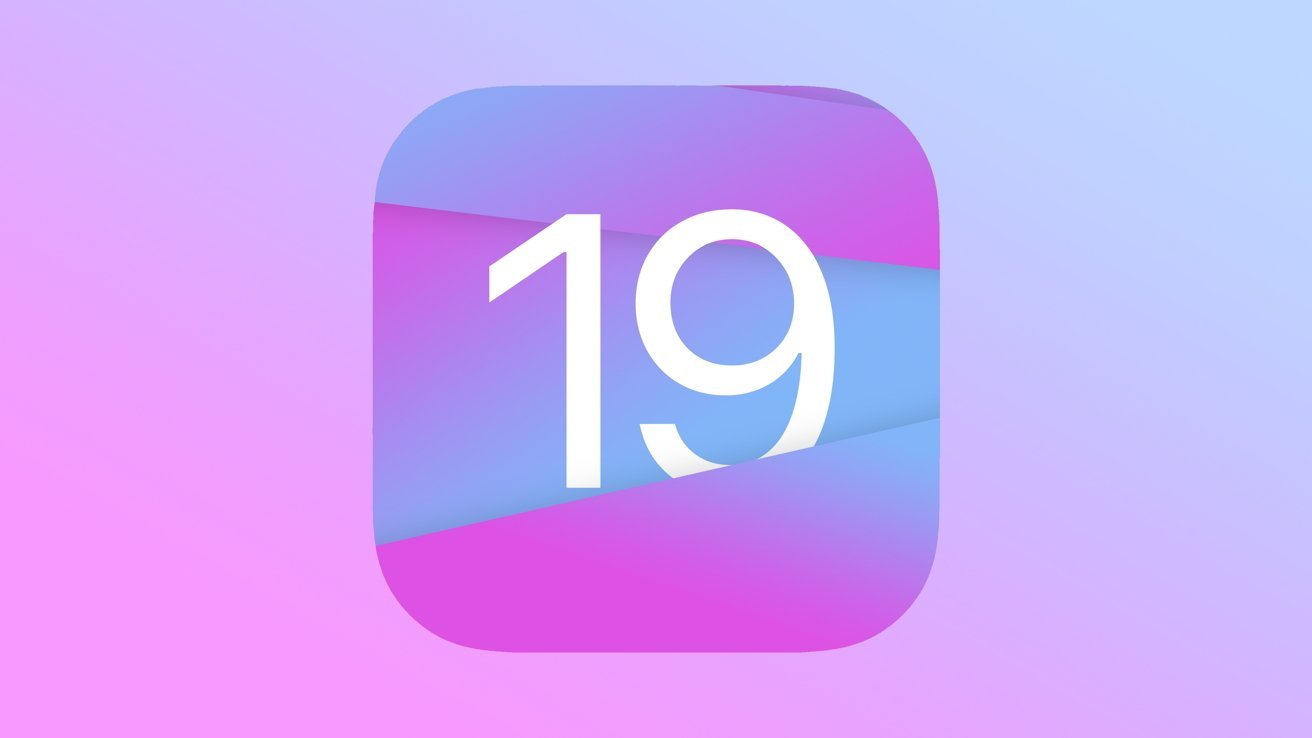Apple's iOS 19, macOS 16 overhauls aimed at ease of use
Apple's expected upgrades to iOS 19, iPadOS 19, and macOS 16 will be a major overhaul, with executives apparently confident consumers will like the faster and easier to use interfaces.

iOS 19 is due this fall, but will be previewed at WWDC
Every year, Apple reveals its inbound changes to its operating systems at WWDC. So far, rumors have claimed that there will be some major interface alterations on the way, and executives are apparently confident they will keep consumers happy.
According to Mark Gurman in Bloomberg's Sunday newsletter, top executives in Apple are confident that users will love the new look and feel of the updated operating systems. The key point of the move is to appeal to existing users, while still attracting new users down the road.
The executives also say that the design change is intended to make the operating systems faster to navigate, easier to learn, and simpler overall to use. The overhaul will also set the operating systems up to handle future hardware designs, such as the rumored iPhone Fold, as well as adapting to an AI-dominated future.
visionOS influenced
Gurman's latest report echoes the claim that elements of visionOS will be included as part of the new versions. This would include a greater use of transparency and a change how windows and buttons are handled.
The change, which is reasoned will make all Apple hardware feel more consistent in their appearance, and functionality, is somewhat questionable. In part because of what Gurman previously wrote on the subject.
Back in February 2024, Gurman said that an update to the operating system interfaces was on the way in 2025 or 2026. However, at the time, he doubted that it would use any UI elements incorporated into visionOS.
The use of glass textures and 3D buttons was viewed to be an aesthetic intended for visionOS alone, due to being used with passthrough video. As users needed to "see" real-world elements through glass panes while hearing the Apple Vision Pro, this is something that would only be an issue for the headset, not for someone using an iPhone.
Apple changing its tone and believing the UI elements of visionOS could work in other operating systems is entirely plausible, especially over the course of a year. Ultimately, it will only be a few months until the world discovers Apple's ultimate design decision at WWDC in June.
Read on AppleInsider

Comments
Tim Cook's over-promising under-delivering Apple will probably add advertisements in the Dock and probably the local search will present sponsored links first as in all the other search boxes. That CEO is so desperate to generate mo' money now that his 'new products' turn out to be failures (like the Car, AI, Vision), but 'service revenue' needs to be pumped up (so far without any tariffs).
So any improvements in workflow and consistency are high on my list. With Apple's deeper dive into Apple Intelligence, I am also expecting Apple to at least attempt to dynamically modify some workflows based on how the user actually uses operating system features. One thing I find myself constantly fighting macOS over is the View Settings on folders. When I tell macOS I want to establish a default view on all folders (with the font sizes, sorting options, columns, and column widths I want) it doesn't always conform to my wishes when I create new folders and subfolders. Likewise, when I deviate from my default on a particular folder, like Applications, I want it to be sticky. At some point everything becomes whacky-world and I want to reset everything to my default, but there is no (apparent) mechanism to do a global fix on View Settings in macOS.
I know it's only my personal opinion, but somehow Apple has managed to make Finder uglier and more difficult to use than Windows Explorer, and Windows Explorer is not something to aspire to. I really hope that Apple does some in-depth usability studies and hands-on labs with actual users who haven't been to the latest UX Ultimate Nirvana Seminar that gets all of the UX developers drooling over cool new things to foist upon their unsuspecting users.
One company I worked for actually set up an extensive usability test lab with multi-angle cameras, keystroke recording, workflow recording, predefined tasks to complete with timing, etc., basically all of the bells and whistles to see how actual customers used our apps with our systems. The UX people who ran the lab made the product UI/UX developers and software weenies who wrote the UI code watch the videos, hear the user's comments, and step into the shoes of how real people (recruited from our customer base) interacted with the product. I always enjoyed it and felt the sting of WTFs more than a few times. For some reason, the company shut it down, too expensive I assume.
In its place the UI/UX people periodically attended seminars and came back with a bunch of new terminology, acronyms, and theoretical techniques to try on live humans. In the spirit of fairness, our software developers and architects did the same thing every year after attending Microsoft PDC/Build or some third-party training and technology enlightenment session, or worse yet, a pseudo-religious plunge into whatever new software development process was sufficiently cool and hip, e.g., waterfall, structured analysis, object oriented design/development, component based design/development, Agile, etc., that would ensure that the next round of software development projects was an order of magnitude worse than the previous one. Throughout it all, new acronyms continued to pile up like a massive compost pile, with old acronyms rotting away at the bottom of the pile, only to be replaced by new ones constantly being thrown on the top of the pile. I suspect the cycle continues to this day.